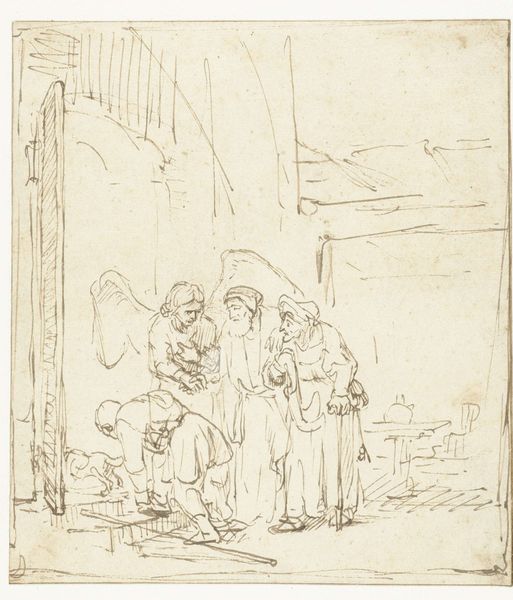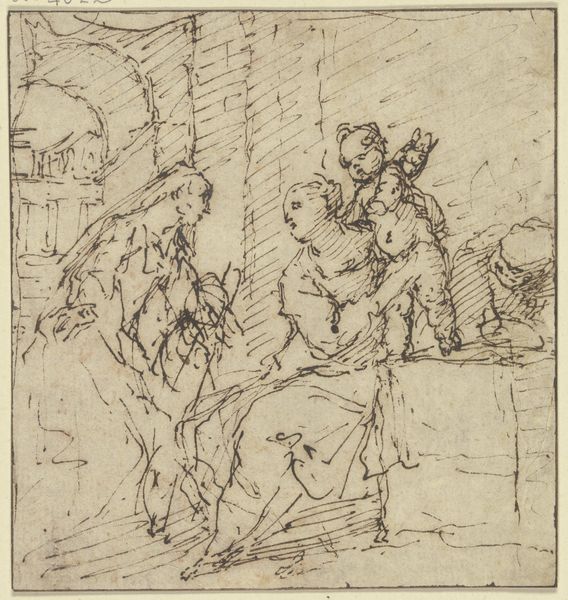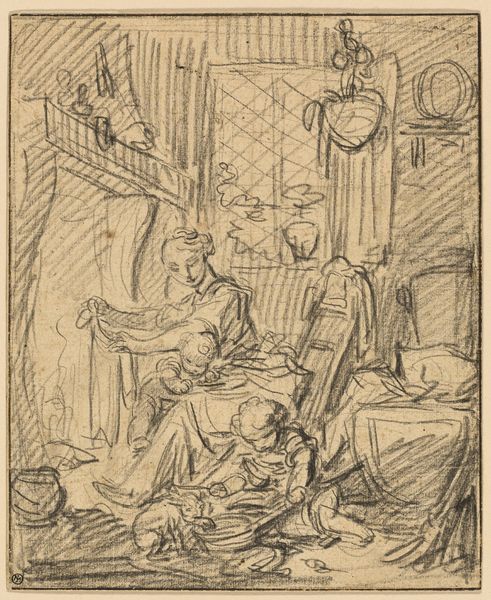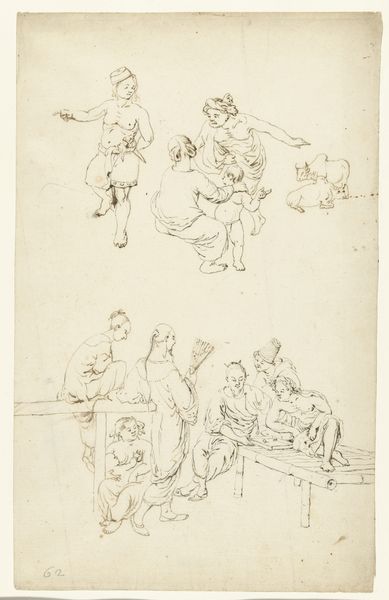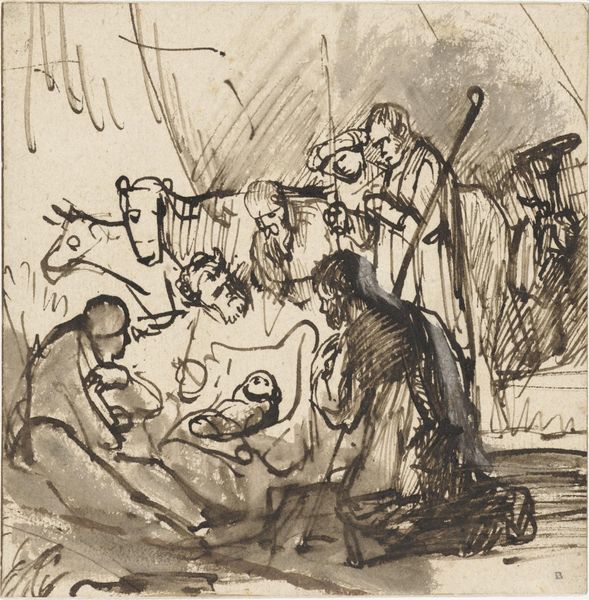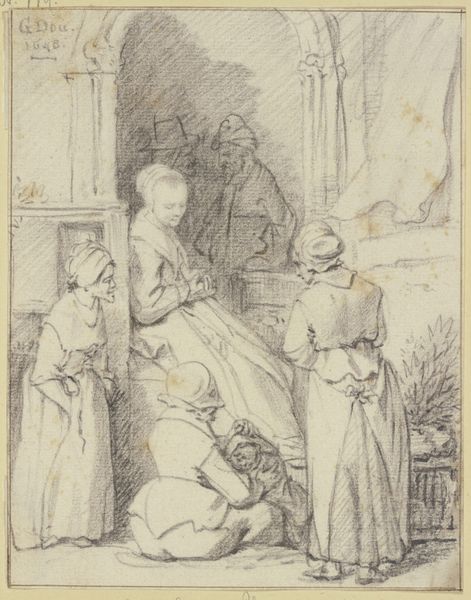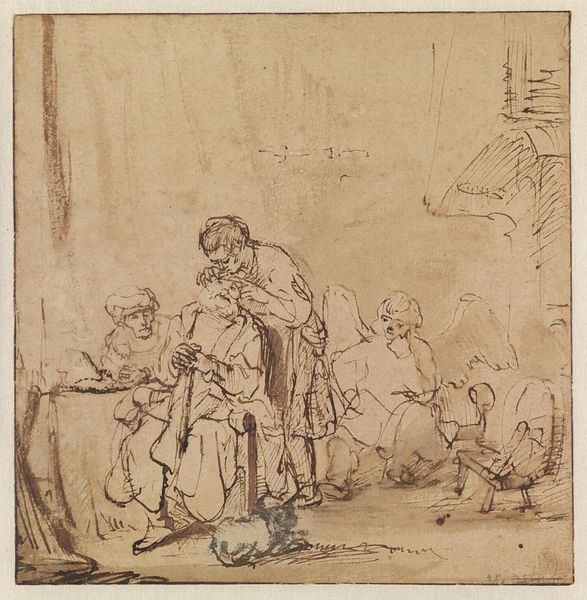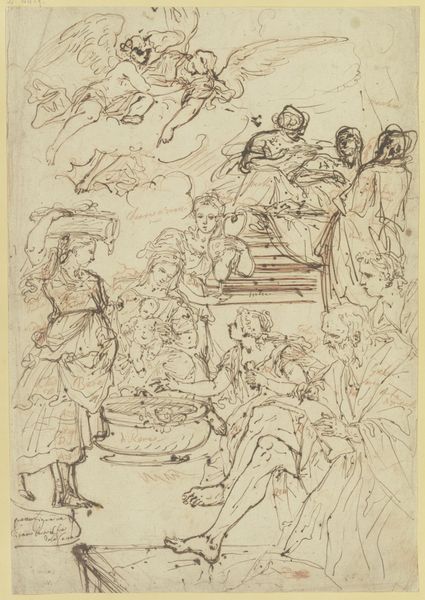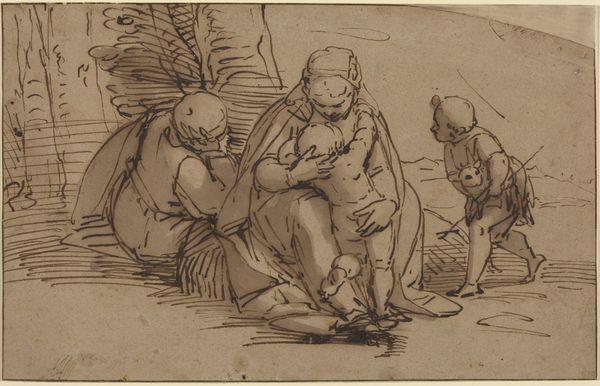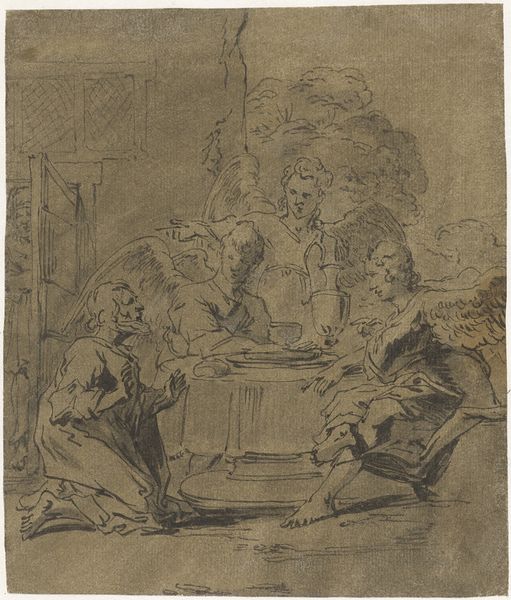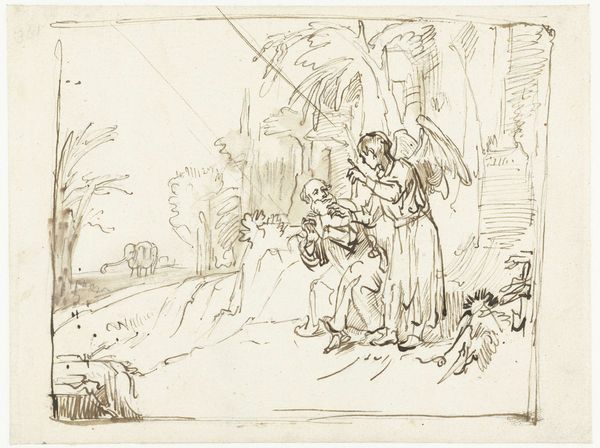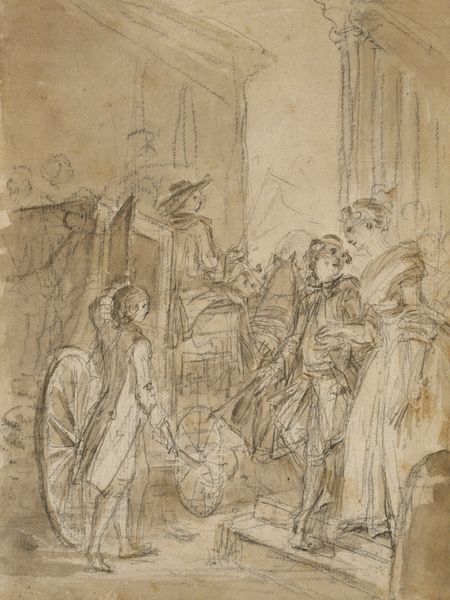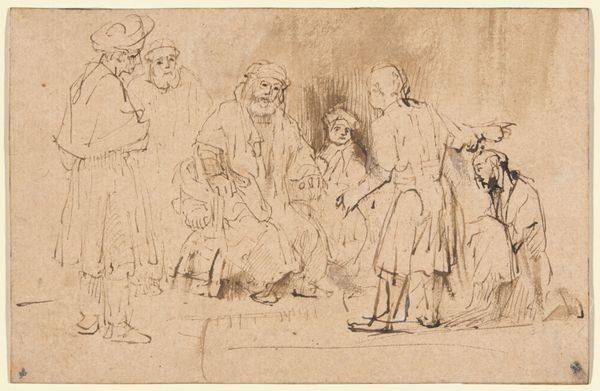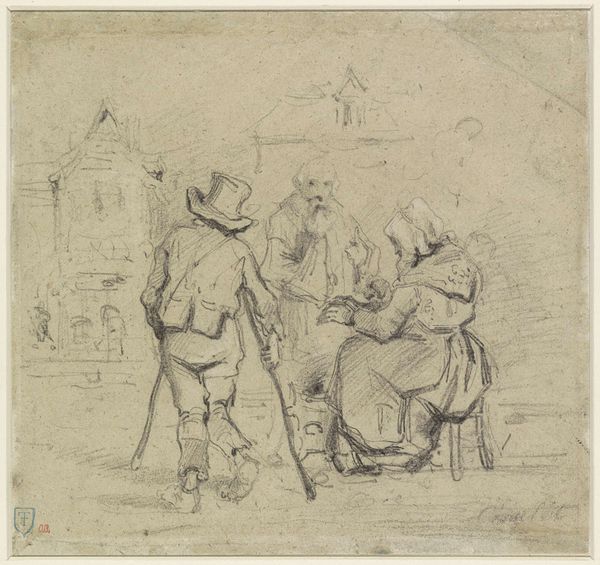
drawing, ink, pen
#
drawing
#
ink drawing
#
narrative-art
#
baroque
#
pen sketch
#
figuration
#
ink
#
sketchbook drawing
#
pen
Dimensions: height 187 mm, width 143 mm
Copyright: Rijks Museum: Open Domain
Curator: This is Rembrandt van Rijn's drawing, "The Archangel Raphael in the House of Tobit," created sometime after 1650. The medium is pen and ink. It's currently held in the Rijksmuseum collection. What strikes you initially? Editor: It feels so immediate, like a captured moment, almost ephemeral. The composition is loosely sketched, but there’s a real sense of atmosphere despite the minimal lines. Curator: Indeed. Looking closely, we see Rembrandt has employed a very rapid, economical line. It's a study, arguably more about the process and material possibilities than a finished piece. Consider the availability and cost of paper and ink in 17th century Netherlands: this wasn't just artistic choice but material constraint. Editor: And within that constraint comes a story. The scene depicts a biblical narrative involving the Archangel Raphael and the family of Tobit, a story filled with faith, healing, and familial devotion. What stands out to me is Rembrandt's subtle representation of the angel, almost as if he is humanized amidst the family. It seems to challenge rigid notions of divinity by portraying him within the domestic sphere. Curator: It also serves as a compelling insight into Rembrandt's studio practice. Was this for a painting that never materialized? Or simply an exploration of a narrative that captured his imagination? The ink itself would've been created from soot, perhaps locally sourced, finely ground and mixed with a binding agent. Consider that even the darkness on this paper depended upon networks of labor and production. Editor: Exactly, this narrative wasn't operating in a vacuum. Seventeenth-century Dutch society was grappling with issues of faith, commerce, and social change, elements that would surely resonate through its art. The themes of familial piety would deeply impact a public trying to find solid footing in a changing landscape. Curator: It underscores how a seemingly simple sketch embodies multifaceted layers of artistic intention and socioeconomic contexts. Editor: Precisely. The act of representing this specific story also becomes an assertion of specific social values about faith, family, and community identity during this transformative historical period. It’s a powerful testament. Curator: Well, reflecting on that I have a better sense of what draws me to his art. Thank you. Editor: My pleasure, thank you. It's always fulfilling to find ways this narrative might speak to us in the present moment.
Comments
No comments
Be the first to comment and join the conversation on the ultimate creative platform.
